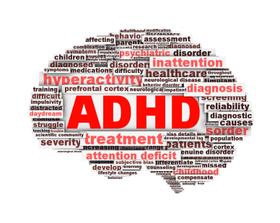For individuals unable to earn a traditional high school diploma, the General Educational Development (GED) test offers a second chance to acquire a recognized credential. Over the past decade, the GED has undergone significant changes and revisions, aligning it with modern educational standards and enhancing its relevance in today's job market. Here, then, is a comprehensive overview of the transformations in the GED test, empowering individuals of all ages to make informed decisions about pursuing this alternative pathway to education and career success. I can personally attest to the importance of the GED as one of my children, who we homeschooled, passed the GED examination.
Transformations to the GED
The Transition from GED 2002 to GED 2014
In the early 2000s, the GED 2002 series was replaced by the GED 2014 series. This transition aligned the test with the evolving educational landscape, particularly the Common Core State Standards. The GED 2014 series emphasized critical thinking, problem-solving, and real-world applications, ensuring that test-takers were prepared for the challenges of higher education and the workforce.
Computer-Based Testing
One of the significant changes in the GED test was the adoption of a computer-based format—this shift from the traditional paper-and-pencil test allowed for a more interactive experience. Test-takers could navigate through questions, receive immediate feedback, and complete the test at their own pace. Additionally, computer-based testing facilitated faster delivery of test results, enabling individuals to move forward with their education and career plans more efficiently.
Subject Area Revisions
The GED test underwent substantial revisions in each subject area to reflect the updated educational standards and ensure its alignment with college and career readiness.
The four subject areas covered in the GED 2014 series are:
Reasoning through Language Arts (RLA)
This section evaluates the ability to comprehend and analyze written text, write coherent responses, and demonstrate practical communication skills.
Mathematical Reasoning (Math)
The math section assesses problem-solving abilities, mathematical reasoning, and quantitative literacy. It covers various topics, including algebra, geometry, data analysis, and statistics.
Science
The science subject area evaluates the understanding of scientific concepts, principles, and the ability to interpret and analyze scientific information.
Social Studies
This section examines knowledge in history, geography, economics, civics, and government, assessing the ability to interpret and evaluate various social studies materials.
Enhanced Focus on College and Career Readiness
Recognizing the need to prepare individuals for success beyond the GED test, the revisions in 2014 aimed to enhance college and career readiness. The updated test placed a greater emphasis on critical thinking, problem-solving, and the application of knowledge in real-life situations. The GED aimed to equip test-takers with the tools necessary to excel in higher education and various professional fields by focusing on these skills.
Addition of Performance-Based Assessment (PBA) Tasks
The introduction of Performance-Based Assessment (PBA) tasks in the GED 2014 series brought a more practical and hands-on approach to the test. These tasks require test-takers to apply their knowledge and skills in real-world scenarios. For example, test-takers in the RLA subject area may be asked to analyze and write responses to passages. In contrast, the Science subject area may involve conducting experiments or analyzing data. PBA tasks foster critical thinking, problem-solving, and the ability to apply acquired knowledge to practical situations.
"PBA are project-based tasks that allow students to both develop and demonstrate skills as they problem-solve and apply learning to new situations. PBA, such as making models, conducting experiments, or engaging in debates, are authentic assessment activities designed to provide a view of students' learning." Source: Chesapeake Public Schools
Removal of the GED Credential Validity Period
Before the GED 2014 series, GED credentials had an expiration date, typically five years from the date of issuance. However, with the introduction of the new series, the validity period was eliminated. This change ensures that individuals who earn their GED credentials no longer face the concern of expiration and can confidently utilize their credentials throughout their professional journey.
Conclusion
The GED test has evolved significantly over the past decade, transforming into a comprehensive assessment that aligns with contemporary educational standards and workforce demands. The transition from the GED 2002 series to the GED 2014 series brought about the content, format, and focus changes. By emphasizing critical thinking, problem-solving, and practical application of knowledge, the GED offers a path to acquiring a recognized credential, enhancing opportunities for further education and career advancement. Individuals unable to earn a traditional high school diploma now have a viable alternative to unlocking their potential and confidently pursuing their goals.
Questions? Contact us on Facebook. @publicschoolreview
#GEDTest #HighSchoolDiplomaAlternative #EducationOpportunity #CollegeReadiness #CareerSuccess #GEDChanges















